63 Music Activities for Kids
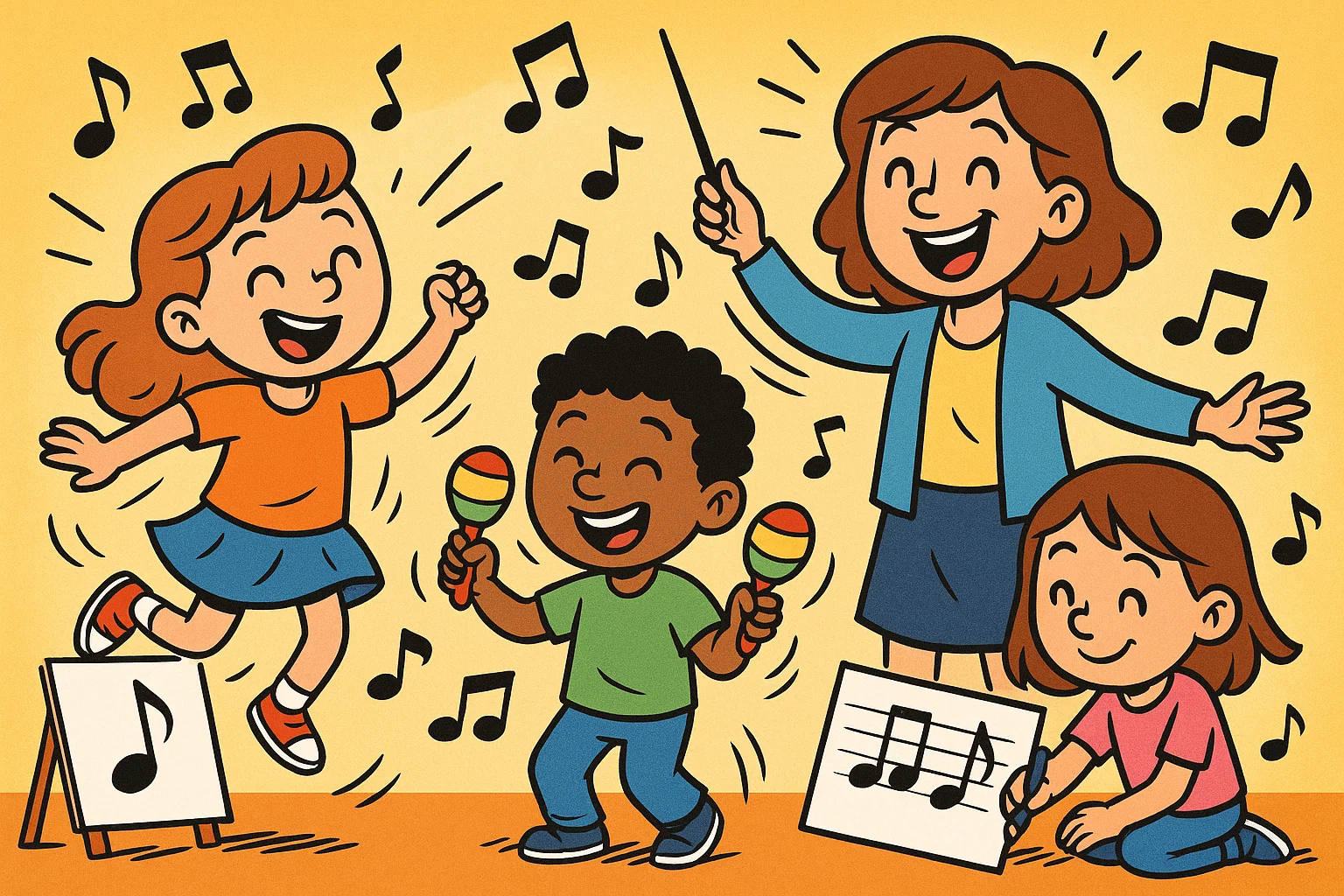
Music is one of the most powerful and joyful ways to connect with your child. It’s more than just a source of entertainment; it’s a fundamental part of a child’s development, helping to build a strong foundation for learning, communication, and emotional regulation. Whether you’re a parent looking for engaging ways to spend time with your little one or a teacher planning your next music class, incorporating music activities into your daily routine can spark curiosity and creativity in every child. From simple rhythm games to creating a full-blown family band, these activities are designed to be fun, accessible, and incredibly beneficial for kids of all ages. For many children, music opens up a whole new world of discovery.
This guide provides a comprehensive toolkit of fun music activities, carefully structured to support your child’s growth. We’ll cover everything from quick, no-prep ideas for a rainy day to more involved projects like building your own musical instruments. You’ll find practical advice, safety tips, and expert insights to help you create a rich, musical environment at home or in the classroom. Let’s dive in and discover how to make music a centerpiece of your child’s learning journey and foster a love of music that will last a lifetime.
Quick Start: Top Picks by Situation
Sometimes you just need a fun idea to try right now. These fast choices are perfect for parents and teachers who want to jump right into a fun activity. Each one is a great starting point and connects to a more detailed section later in this guide. Think of this as your go-to guide for music activities.
Rainy Day Energy Burners
When the weather traps you indoors but the energy levels are high, these high-movement music games are the perfect solution.
- Freeze Dance: This classic game is simple and effective. Put on a variety of songs with different tempos and tell everyone to dance around. When the music stops, everyone must freeze in whatever position they’re in. This game helps develop listening skills and impulse control. For safety, ensure there’s plenty of open space and no sharp furniture nearby.
- Animal Dance: Choose a favorite song and have everyone dance like a specific animal—like a bear walking clumsily, a snake slithering, or a butterfly gracefully fluttering its wings. You can change the animal every 30 seconds to keep it fresh and engaging.
- Limbo: A classic party game that can be adapted for any space. Hold a broomstick or a pool noodle between two people. Play some upbeat music and have kids “limbo” under the stick. This promotes flexibility and spatial awareness. Ensure the stick is held low enough to be a challenge but high enough to be safe.
Quiet Time Creativity
When you need a calming, focused activity, these musical games encourage listening and reflection.
- Draw What You Hear: Play a piece of instrumental music—something with a clear mood or story, like a classical piece or a film score. Give kids paper and crayons and ask them to draw whatever the music inspires in them. Afterward, you can have a short discussion about the different pictures and how the music inspired them.
- Musical Storytelling: Play a short, instrumental piece and ask kids to close their eyes and listen. Then, as a group, collaboratively create a story inspired by the music, with each person adding a sentence.
- Mood Music: Use different types of music to explore emotions. Play a fast, upbeat song and ask, “How does this music make you feel?” Then play a slow, sad song and ask the same question. This helps children connect sounds with emotions.
Party Group Games
These music games for kids are perfect for groups and encourage cooperation and fun.
- Musical Chairs: A classic for a reason! Arrange chairs in a circle, one less than the number of players. Play music as everyone walks around the chairs. When the music stops, everyone rushes to find a seat. For a less competitive version, remove a chair each round but have kids find a way to share the remaining chairs, working together to make sure no one is “out.”
- Hot Potato: Use a soft item like a stuffed animal or a beanbag. Have everyone sit in a circle and pass the “hot potato” while music is playing. When the music stops, the person holding the item is “out” (or, in a non-elimination version, has to do a silly dance).
- Pass the Parcel: A wrapped prize is passed around a circle while music plays. When the music stops, the person holding the parcel unwraps one layer. This continues until the final layer is unwrapped and a prize is revealed.
Benefits and Skills Developed
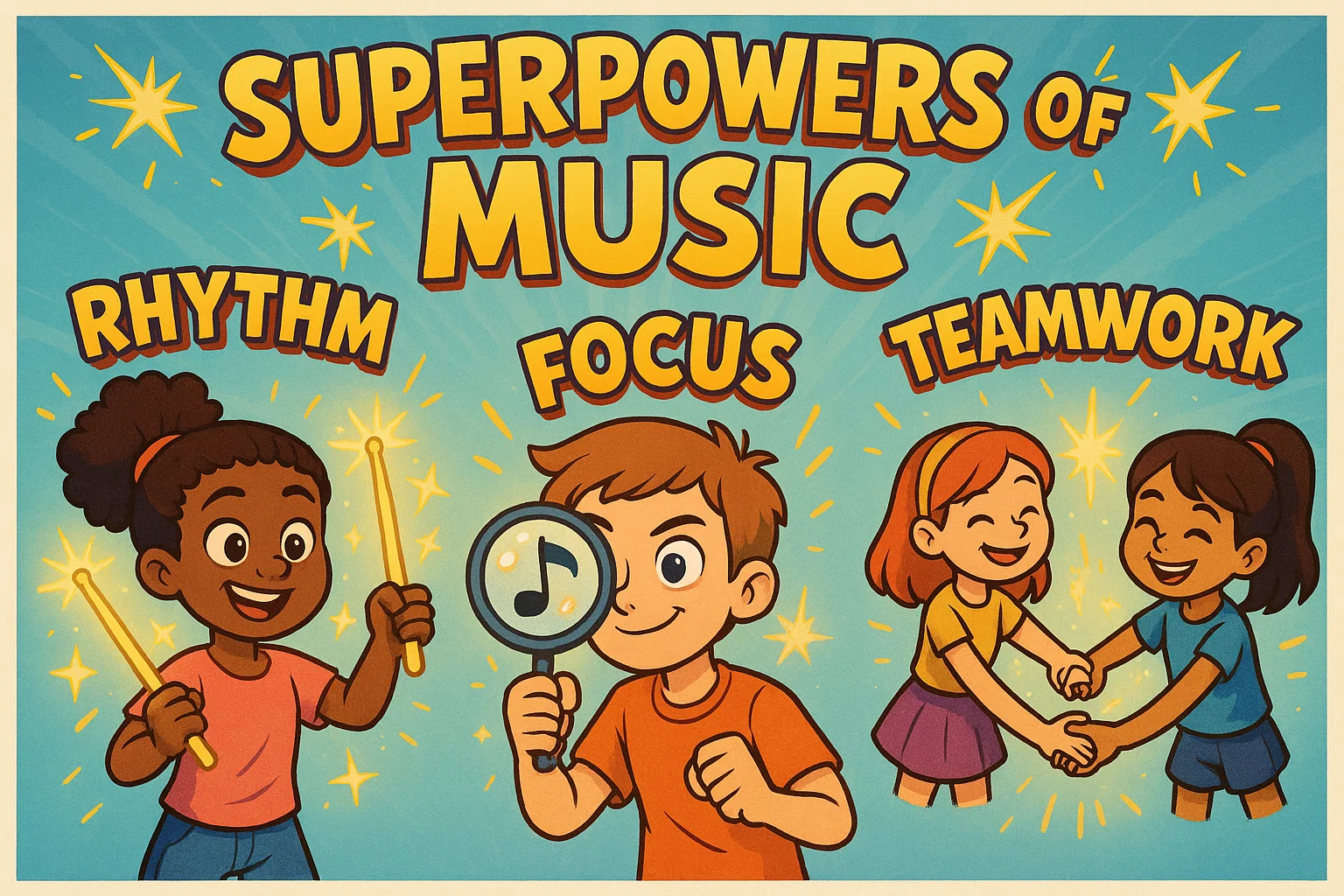
The benefits of music activities for kids go far beyond simple entertainment. Engaging with music supports growth across key developmental areas. According to the National Association for Music Education, early music education can have a profound impact on cognitive skills, language development, and even mathematical abilities.
Rhythm and Timing
Music is all about rhythm, and learning to follow a beat builds essential skills.
- Clapping Games: Simple clapping to the rhythm of a song or a nursery rhyme helps children develop coordination and body awareness. For instance, tapping out a beat to “Twinkle, Twinkle, Little Star” can help kids learn about tempo and pattern recognition.
- Rhythm Sticks: Using rhythm sticks is an excellent way to introduce a steady beat. Kids can tap them together, on the floor, or against a drum. This practice can improve motor skills and provide a foundational understanding of musical structure.
Listening and Auditory Discrimination
Musical activities hone a child’s ability to focus on and distinguish between different sounds.
- Name That Tune: Play a short clip of a well-known song and have kids try to name it. This sharpens their auditory memory. This is one of many fun musical games and activities you can introduce.
- What Instrument Do You Hear?: Play different types of music, each with a prominent instrument, and ask kids to identify it. You can provide picture cards (like a trumpet, a guitar, or a xylophone) to help them connect the sound with the image. This exercise improves attention and memory.
- Sound Scavenger Hunts: Go on a hunt for different sounds, both inside and outside. Have kids close their eyes and guess what they hear—a bird chirping, a car honking, or the sound of their own footsteps.
Social and Emotional Growth
Making music with others teaches kids how to interact and express themselves.
- Call-and-Response: This simple singing game teaches children to take turns and respond to a leader. The leader sings or claps a phrase, and the group repeats it. This builds confidence and listening skills.
- Family Band: Give everyone a musical instrument—or a DIY one like a kitchen pot—and play along to a favorite song. This cooperative activity builds turn-taking skills and fosters shared creativity.
- Prop-Sharing: When using scarves or rhythm sticks, kids learn to share and take turns, which is essential for social development.
Activities by Age and Stage
It’s important to choose activities that are appropriate for your child’s developmental stage. Here’s a guide to what works best at different ages.
Toddlers (1–3)
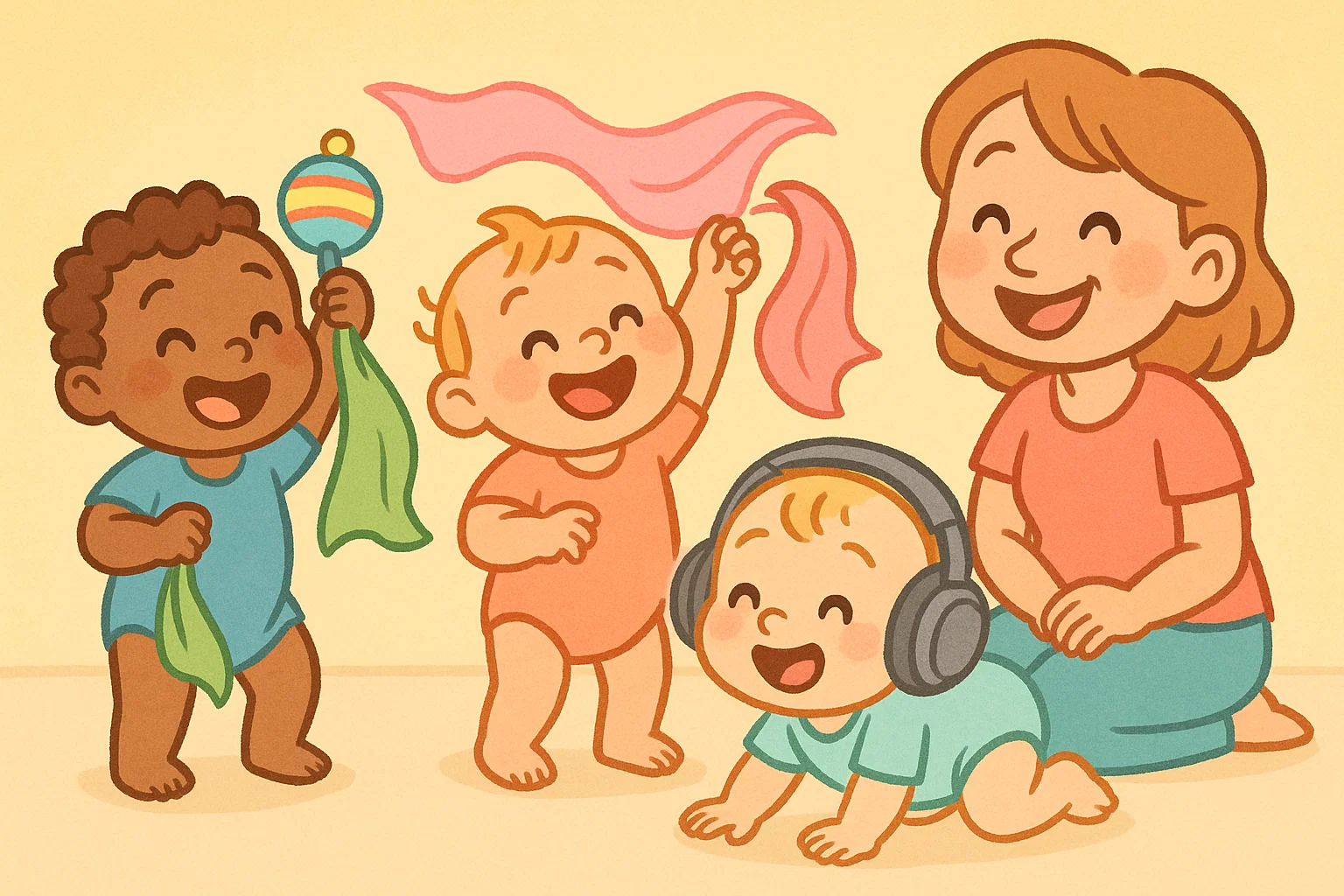
Toddlers respond well to simple, repetitive activities. Keep durations short, usually 5–10 minutes, and use clear cues.
- Simple Action Songs: Nursery rhymes like “The Wheels on the Bus” or “If You’re Happy and You Know It” with corresponding actions are perfect for this age. They help develop motor skills and connect words to movement.
- Scarves and Ribbons: Simple ribbons or a soft scarf can transform a dance party. Toddlers can wave them around to the music, creating a visual representation of the rhythm and flow.
- Shaker Play: Fill small, secure bottles or containers with rice or beans to create a simple shaker. Toddlers love the different sounds they can make and can easily hold and shake them to a beat.
Preschool (3–5)
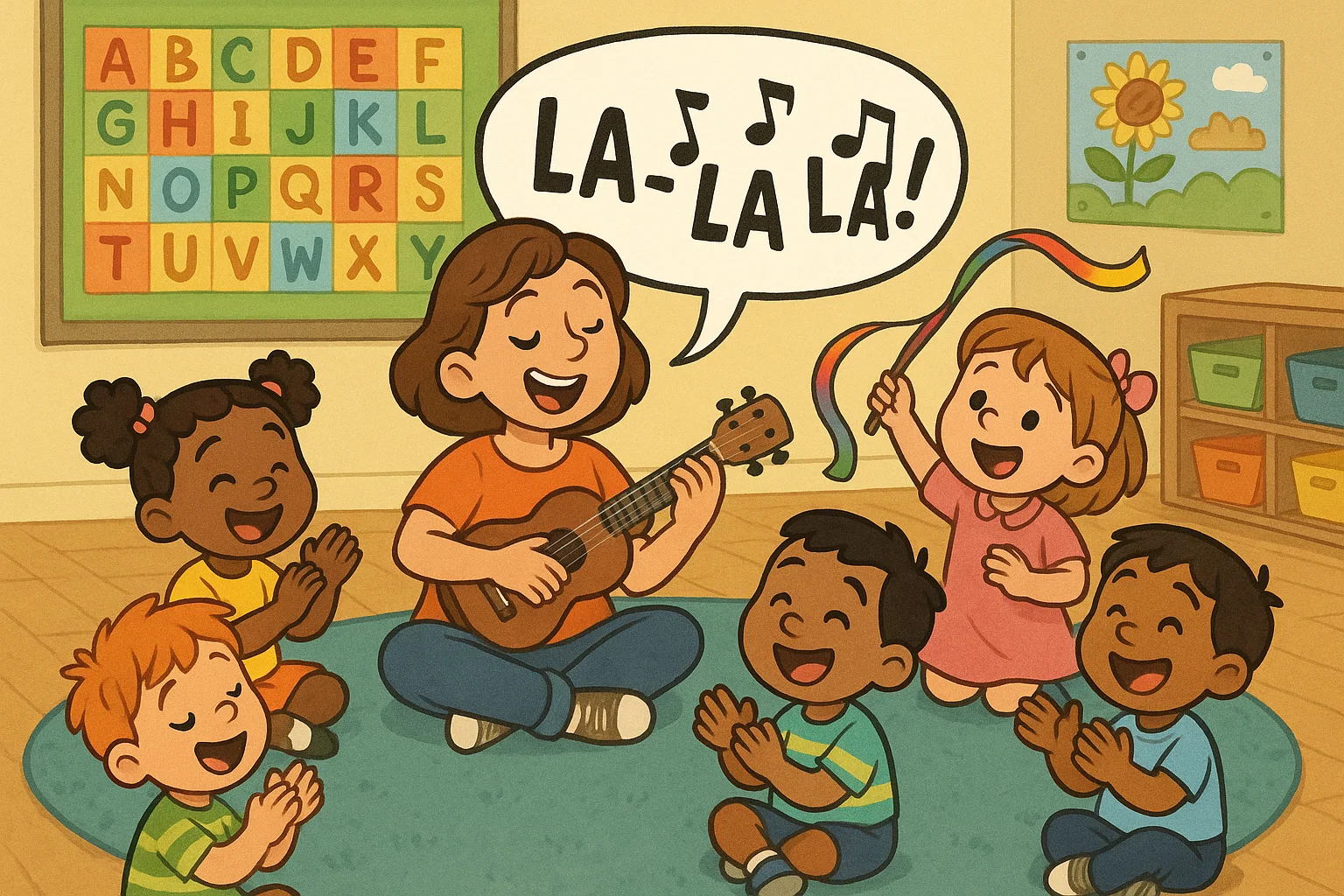
Preschoolers are ready to explore contrasts and more complex movements. This is the perfect stage to introduce more structured musical activities.
- Follow the Leader: This game is a great way to introduce dynamics. The leader can stomp loudly and slowly, then switch to tiptoeing quietly and quickly, and the group follows along.
- Freeze Dance: A favorite at this age, as it helps them practice impulse control and coordination.
- DIY Drums: A plastic bucket, a shoebox, or even a pillow can become a drum. Give your child a wooden spoon or their hands and let them play along to their favorite songs.
Early Elementary (6–8)
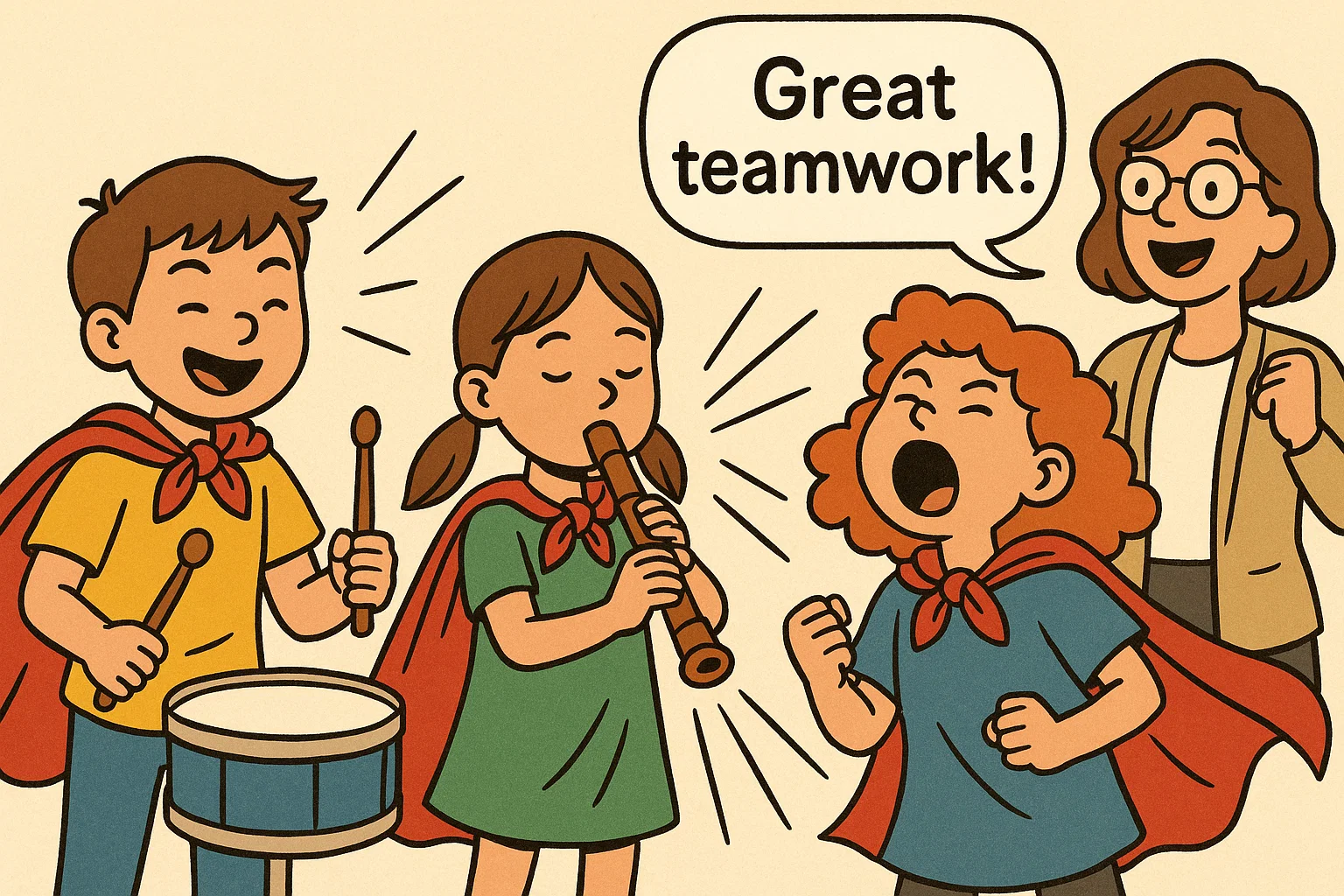
Kids in this age range can handle more structured activities that involve patterns and simple notation. This is where you can start to teach music in a more formal way.
- Beat-Passing: Sit in a circle and tap out a steady beat. Pass a simple rhythm pattern to the next person, who must repeat it and then add their own.
- Name That Tune: This game becomes more advanced as they can identify more songs and even different artists. This is a great way to play musical games.
- Beginner Composition Cards: Use simple cards with visual cues (like a long line for a sustained note or a dot for a quick one) and have kids create their own simple rhythms or melodies. This is a fun, hands-on way to teach kids to read music.
Older Kids (9–12)
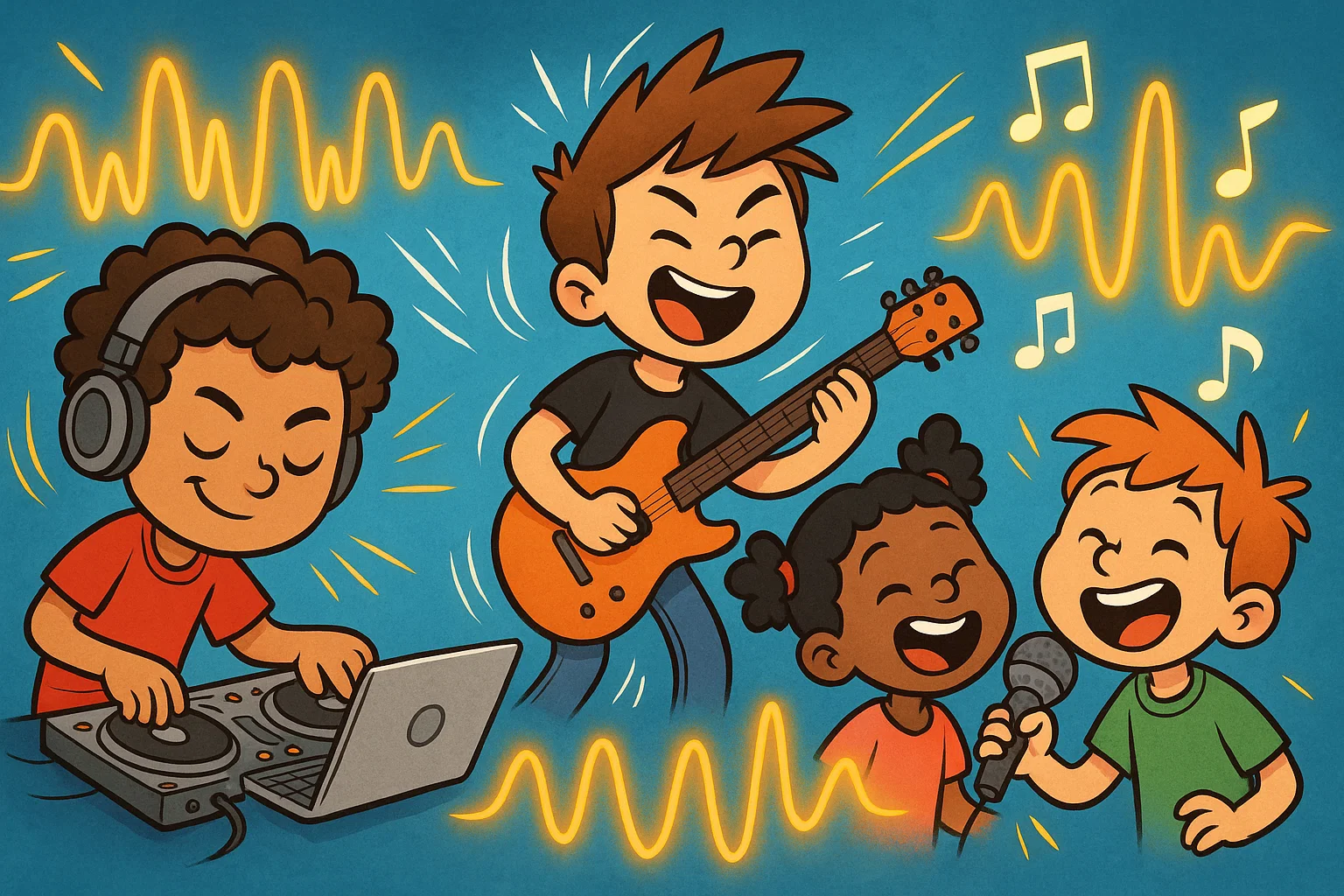
Older kids can handle more complex, collaborative, and creative challenges.
- DJ Remix Challenges: Use a simple app or a free online tool to let them remix two songs together. This introduces them to music structure and technology.
- Songwriting Prompts: Give them a theme or a “story starter” and encourage them to write a song. This can be as simple as a short chorus or a full-length piece with verses.
- Ensemble Games: Assign roles like a percussionist, a singer, or a rhythm maker and have them work together to create a single piece of music.
Movement and Dance Games
Pairing movement with music is a powerful way to engage a child’s gross motor skills and build a strong connection between their body and sound. These music and movement activities are a blast for all ages.
Freeze Dance Variations
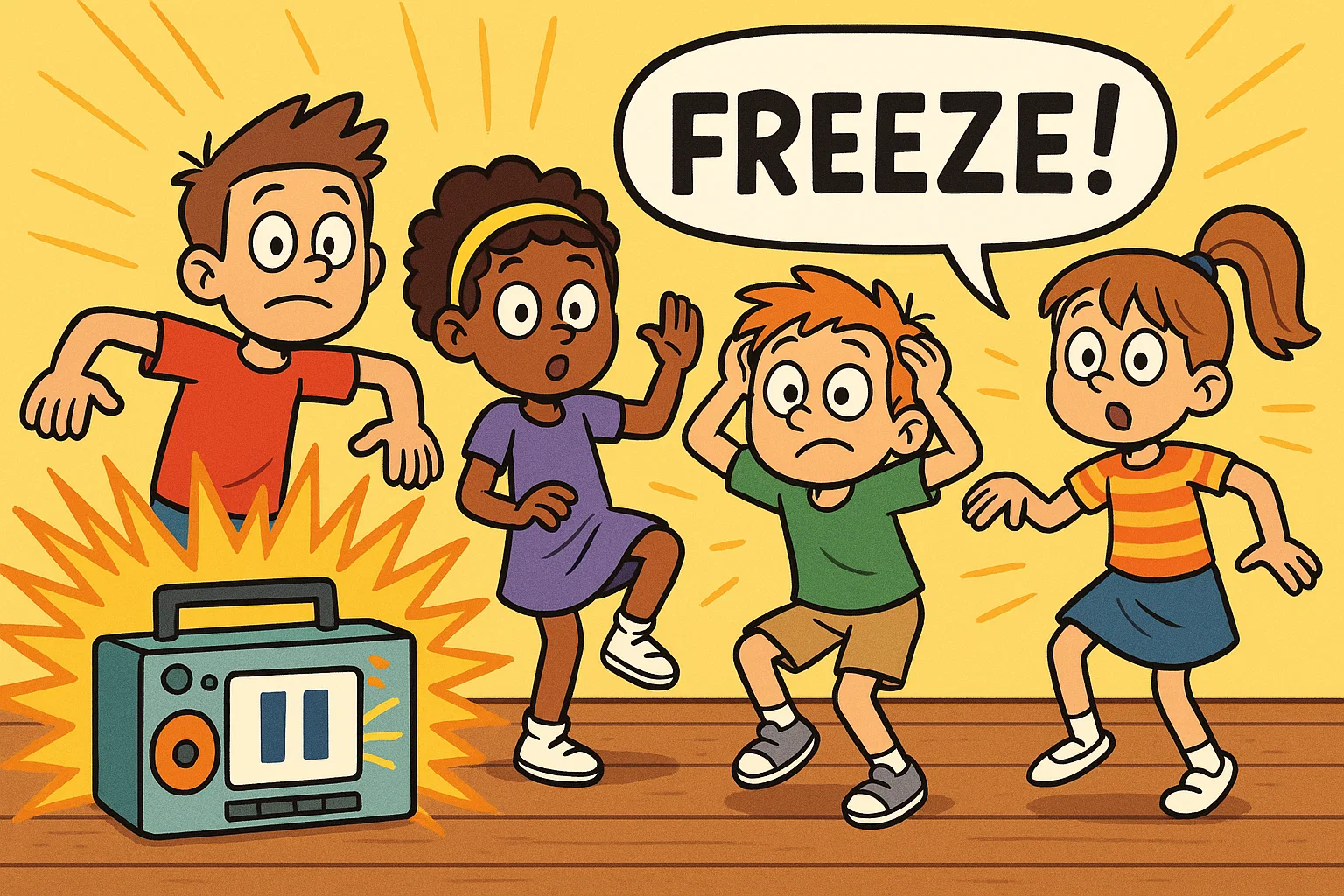
- Themed Freeze Dance: Try a theme like “animal freeze dance” where everyone freezes in an animal pose, or “superhero freeze dance” where they strike a heroic pose.
- Pose Prompts: When the music stops, instead of just freezing, call out a pose for everyone to strike, like “tree pose,” “statue of liberty,” or “dab.”
- Tempo Changes: Use a playlist with songs that change tempo frequently. This challenges kids to adapt quickly and improves their responsiveness.
Animal Dance
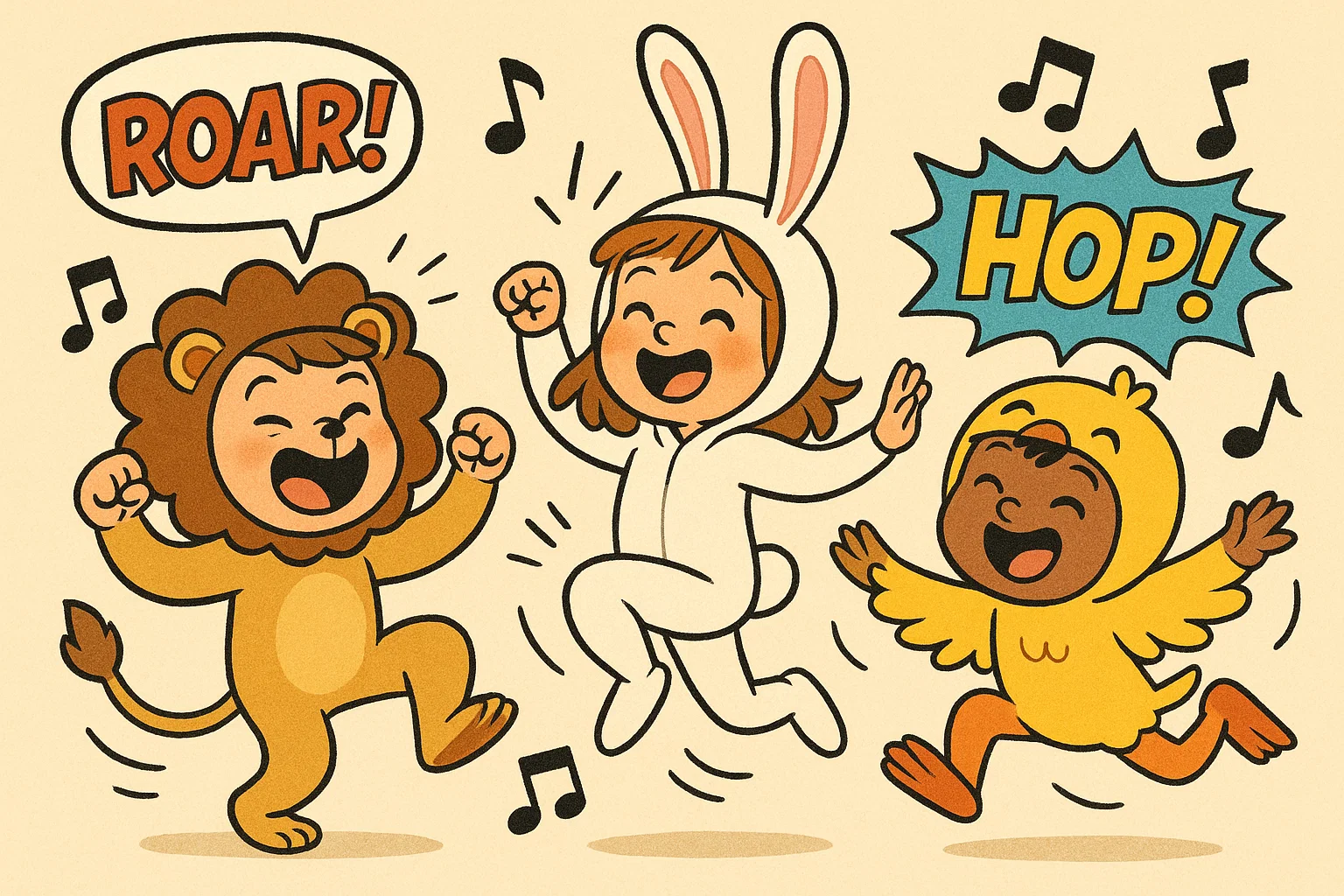
Have kids move like different animals to explore tempo and dynamics. “Can you move like a big, slow bear?” (slow tempo, loud dynamics). “Now, can you tiptoe like a little mouse?” (fast tempo, quiet dynamics). You can add a “guess the animal” round to make it a fun game.
Hokey Pokey and Limbo
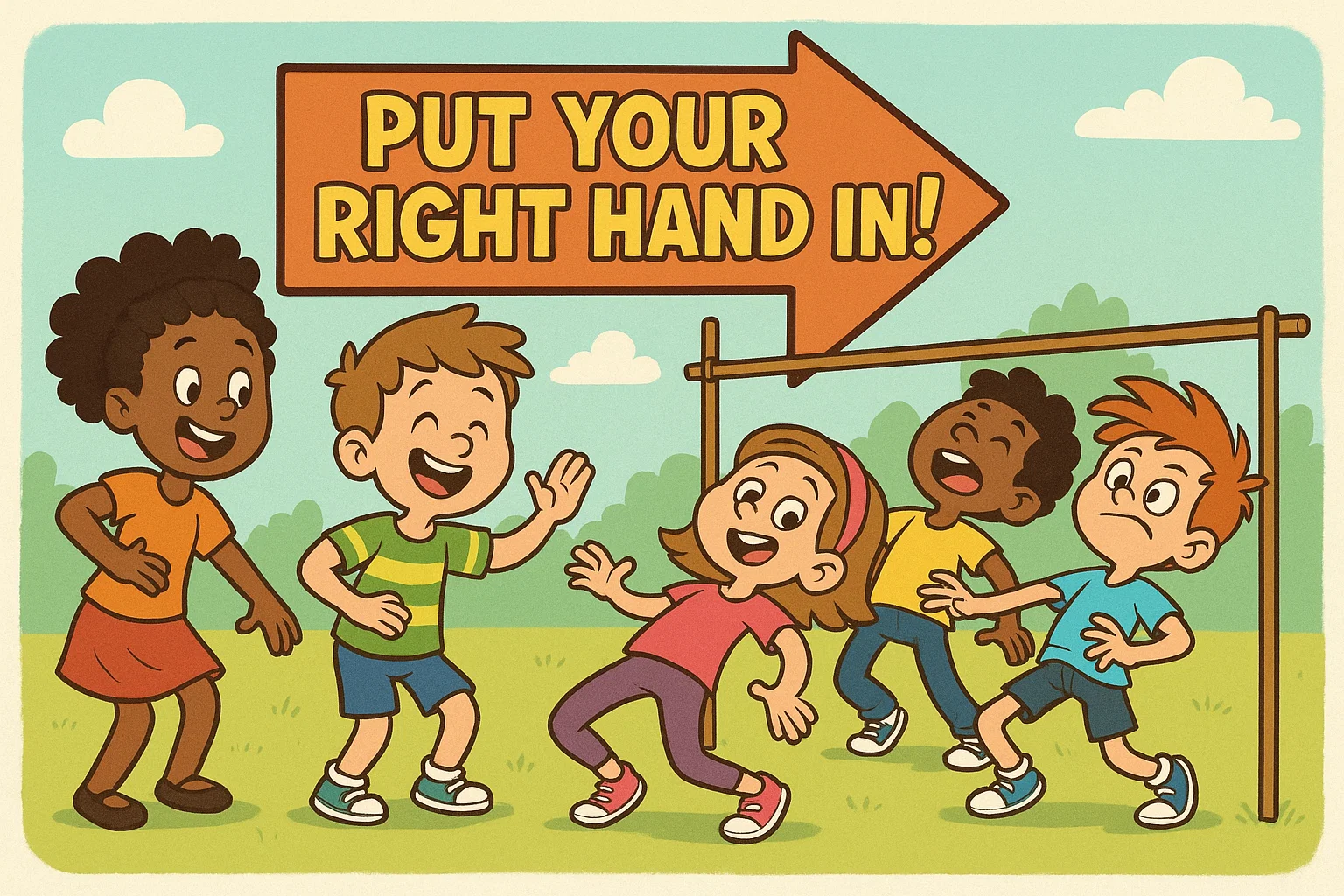
These classic games are great for a reason. The Hokey Pokey helps kids identify body parts and practice following directions. Limbo improves flexibility and body awareness. For a more inclusive option, offer alternative ways to “go under” the stick, such as crawling or stepping over it.
Rhythm Play and Body Percussion
You don’t need instruments to make music. Your body is the perfect tool for learning rhythm.
Clap-Stomp-Snap Patterns
Start with a simple 4-beat pattern, like clap-clap-stomp-stomp. Practice this together. Then, introduce a call-and-echo game where you create a new pattern, and they echo it back to you. This exercise lays the foundation for understanding musical phrasing.
Rhythm Sticks
Simple wooden rhythm sticks are a great tool. Teach safe grips and talk about the different sounds they can make when you tap them on the floor, on a chair, or against each other. Introduce quiet vs. forte (soft vs. loud) drills and create partner patterns for turn-taking.
Kitchen Drum Set
Turn your kitchen into a music room! Use pots, pans, plastic containers, and wooden spoons. Talk about the different sounds each item makes. Does the metal pot make a “ting” sound? Does the plastic box make a “thump” sound? Create a family groove by assigning each family member a specific pot and beat to play.
Listening Games and Soundtracking
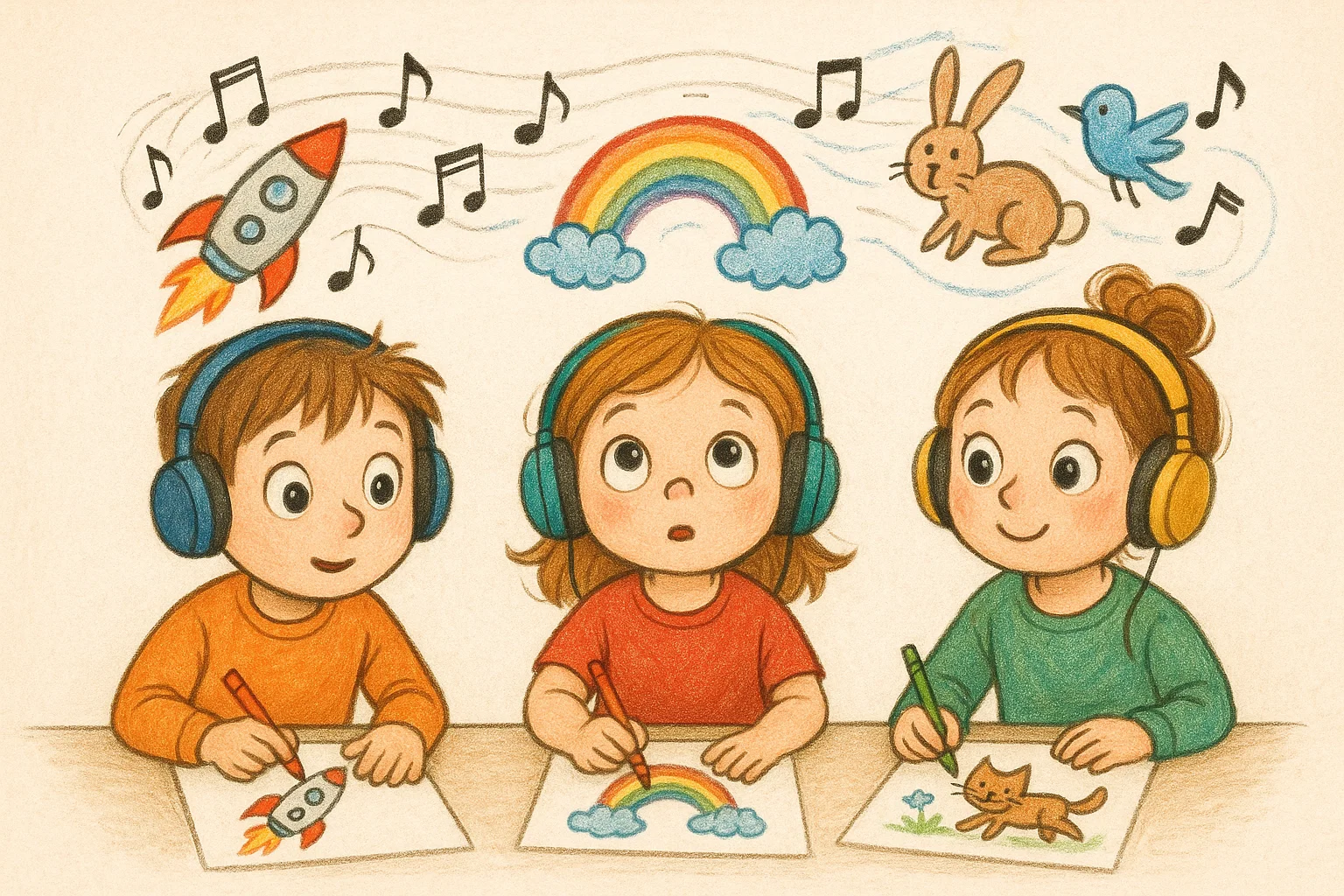
Focused listening helps children develop attention spans and imagination.
Draw What You Hear
This is a wonderful activity to get kids to listen for details. Play contrasting pieces of music, like a fast, lively tune and then a slow, calm one. Ask kids to draw lines, shapes, and colors that match the music. For instance, a fast song might inspire zig-zag lines, while a slow song might inspire long, flowing curves.
What Instrument Do You Hear?
This game trains the ear to distinguish between different types of music. You can use flashcards with pictures of instruments to help. Play a clip of a string quartet, then a clip of a jazz band with a saxophone, and have kids identify the main instrument they hear. This is one of the great games and activities for improving auditory skills.
Music Fast and Slow
Use a simple, repetitive piece of music and have kids walk on their toes when it’s fast and stomp their feet when it’s slow. Naturally introduce terms like allegro (fast) and lento (slow) to expand their vocabulary.
Singing, Karaoke, and Call-and-Response
Singing is a fantastic way to build confidence and pitch awareness.
Family Sing-along
Have a weekly family sing-along. Display the lyrics on a screen or use a book. Encourage everyone to join in, even if they’re a little shy. You can also give someone a “microphone” (a toy or a hairbrush) to help them feel more comfortable taking the lead.
Call-and-Response Games
These are an easy way to build vocal skills. Sing a simple phrase like “Hello, everybody!” and have the group sing it back. You can change the tone or mood each time (“Hello, everybody, in a sad voice!” or “Hello, everybody, in a silly voice!”).
Shower and Solo Confidence
Encourage your kids to sing wherever they feel comfortable—in the shower, in the car, or in their room. Praise their effort and enthusiasm. Creating a “preferred song list” can help shy singers build confidence by choosing songs they love.
Group Circle and Party Classics
These games are great for teaching social skills in a group setting.
Musical Chairs
For a non-competitive version, when the music stops, have everyone find a chair and sit down. If there’s an extra person, they can sit on someone’s lap. The goal is to make sure everyone is seated, promoting cooperation over competition.
Hot Potato and Pass the Parcel
These are classic for a reason. Hot Potato teaches quick reactions and can be made less stressful by adding a funny task instead of elimination. Pass the Parcel builds anticipation and teaches patience as each layer is unwrapped.
Follow the Musical Leader
Similar to a standard “Follow the Leader” game, but the leader must use musical cues. The leader might hum a tune, clap a rhythm, or sing a phrase, and the rest of the group follows their lead. This encourages creativity and active listening.
DIY Instruments and Maker Corner
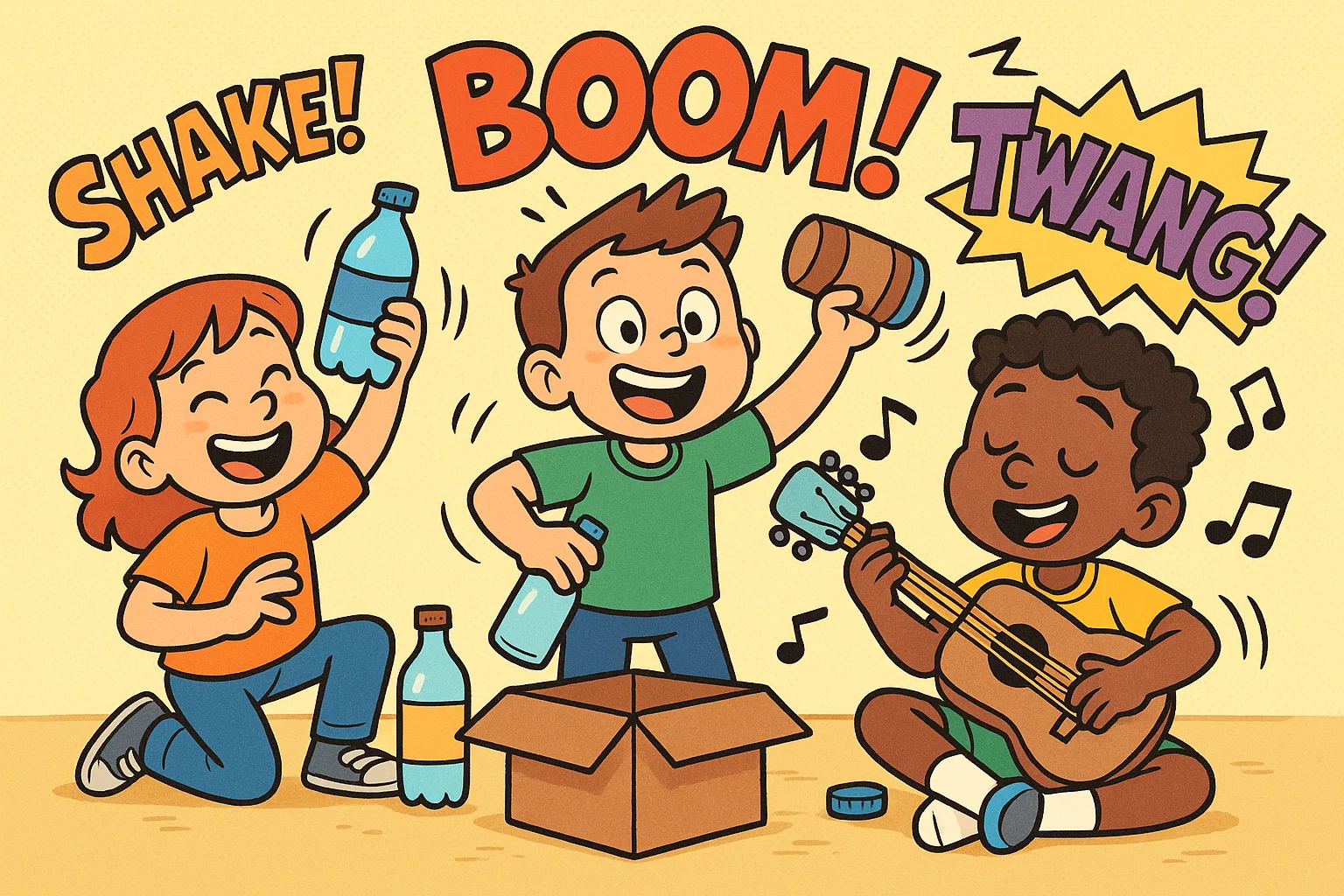
Making your own instruments is a fun way to explore different sounds and the science behind them.
Bottle Xylophone
Fill glass bottles with different levels of water. Tap them gently with a wooden spoon. The different water levels create different pitches. You can even color-code the water to help kids remember which note is which.
Shakers and Rainsticks
Use empty toilet paper rolls or bottles. Fill them with different items like rice, dried beans, or small beads. Talk about the different sounds they make—a gentle shush, a loud rattle, or a soft swish.
Box Drum and Rubber-Band Guitar
A simple shoebox can be a drum. Stretch rubber bands over a sturdy box to create a “guitar.” Kids can pluck the bands to create different tones.
Composition and Songwriting for Kids
Songwriting encourages creativity and logical thinking.
Lyric Starters and Story Songs
Give kids a simple prompt, like “write a song about a dragon who lost his voice.” You can use a simple verse-chorus template and provide a list of rhyming words to get them started.
Four-Square Melody Grid
Draw a simple grid with four boxes. In each box, have kids draw a simple shape that represents a musical note (a high dot, a low dot, a long line, etc.). They can then “perform” their composition by singing the sounds represented by the shapes. This is a great way to introduce a music curriculum to young students.
Classroom Ensemble Piece
For a group setting, assign different roles. One person might be in charge of the rhythm, another the melody, and a third can create sound effects. This teaches them about the different parts of a song and how they come together.
Music Appreciation Day
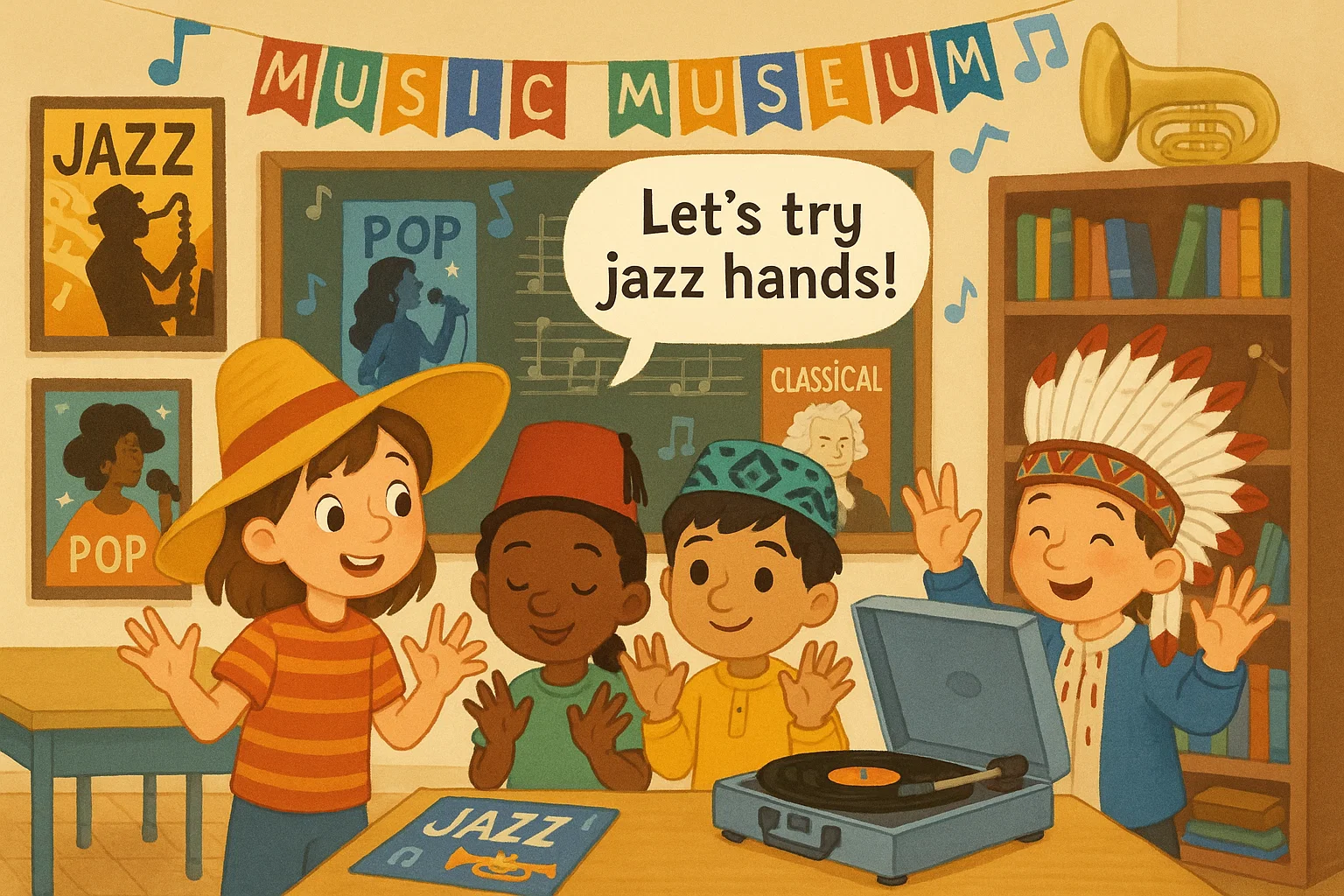
This is an opportunity to explore different cultures and musical styles.
Genre Passport
Create a “passport” with different musical genres. Each week, listen to a new genre—jazz, classical, pop, folk—and give them a “stamp.” Talk about a fun fact about the genre, a famous artist, and a movement idea that goes with it.
Composer or Artist Spotlight
Choose a composer or artist, like Mozart or Taylor Swift. Listen to one of their most famous pieces, learn a few fun facts about them, and identify the instruments they use.
Mood Boards with Playlists
Help kids create a “mood board” by pairing different songs with colors or scenes. For example, a calm, classical piece might be paired with a picture of a starry night, and a fast pop song with a bright, sunny image. This helps them connect music with feelings and storytelling.
Props, Ribbons, Scarves, and Puppets
Props can add a fun, sensory element to musical activities.
Ribbon Dance Routines
Give kids ribbons or scarves and teach them simple routines. For instance, have them wave the ribbon high when the music goes up and low when it goes down. Create a simple “clean-up song” that signals when it’s time to put the props away.
Scarf Peekaboo for Toddlers
Use a soft scarf to play peekaboo to a beat. Hide your face with the scarf on a specific beat and reveal it on another. This is a gentle way to introduce rhythm to little ones.
Puppet Conductor
Use a puppet as a conductor. The puppet can give cues to the children, telling them to play louder or softer, or faster or slower. This is a fun way to give kids a visual cue without a spoken command.
Outdoor and Large-Space Ideas
Take the fun outside with these large-space activities.
Rhythm Relay
Divide kids into teams. One person taps a rhythm on a drum or a box. The next person in line must repeat the rhythm and then run to the next station. This adds a fun, athletic element to a rhythm game.
Beat Basketball
For older kids, have them dribble a basketball to a beat. This is great for coordination. You can also have them pass the ball to a partner in time with the music.
Sound Hunt
Go for a walk and have kids listen for different sounds in nature. What does a fence sound like when you tap it with a stick? What sound do leaves make when you walk through them? You can record these sounds on a phone and create a “class soundtrack.”
Themed Units and Seasons
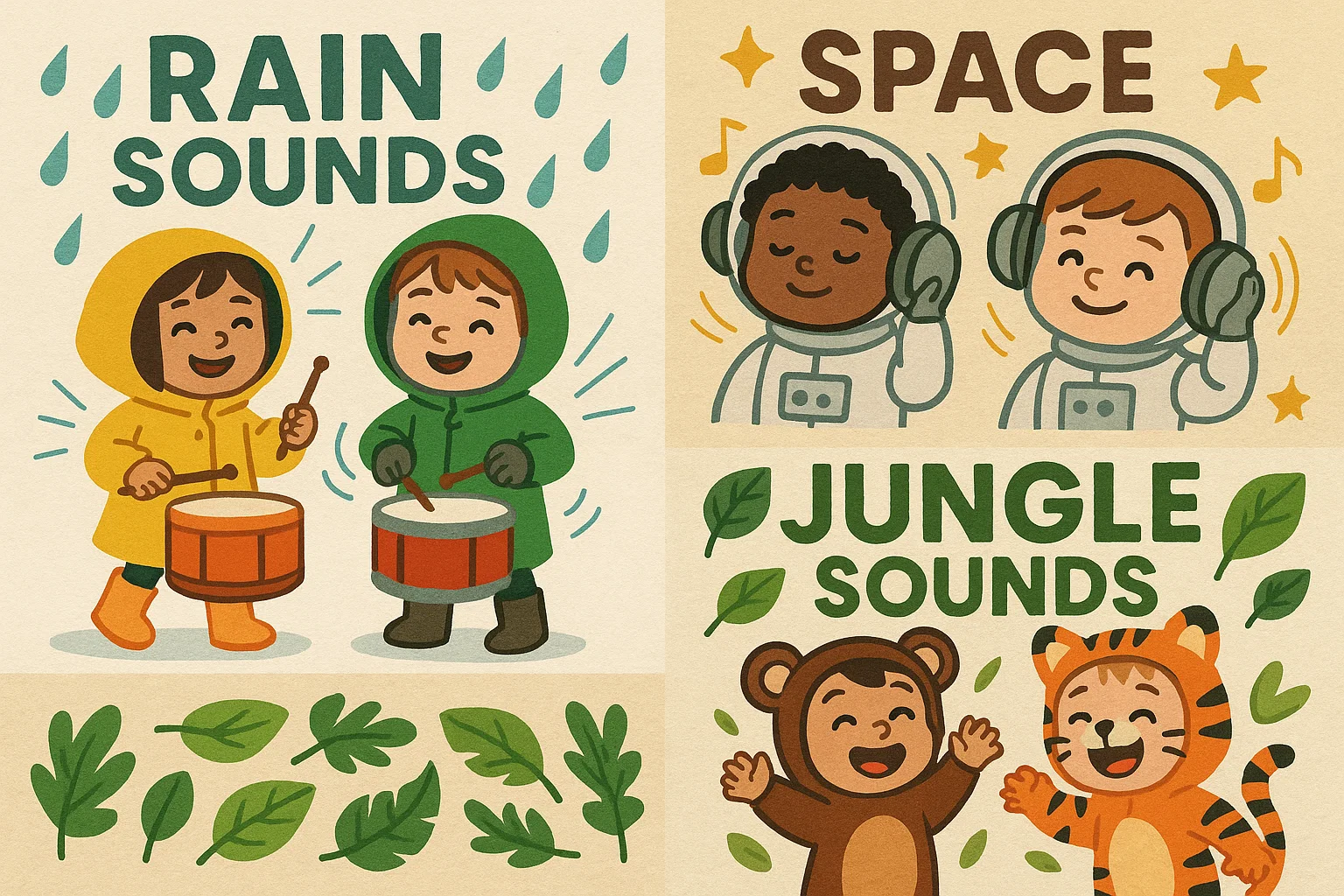
Themed units make learning music even more engaging.
Bear Hunt Adventure
Base a musical adventure on the classic story, Going on a Bear Hunt. Assign different body percussion sounds to each part of the story. For example, a gentle tiptoe sound for “sneaking,” a stomping sound for “mud,” and a swishing sound for the “river.”
Space Journey
Use synth textures and sounds to create a “space journey.” Create a “countdown” rhythm with clapping and stomping. You can even build a “rocket” shaker with a bottle and some rice.
Ocean and Rainforest
Create an ocean soundscape with a rainstick ensemble. Use animal calls and songs with different tempos to represent the waves and the animals. This is a fun way to incorporate music with science and geography.
Tech Add-ons: DJ, Apps, and Recording
Technology can be a fun and useful tool when used purposefully.
DJ Mashup Challenge
Using a kid-friendly app, have kids try to create a mashup of two of their favorite songs. This teaches them about structure and tempo.
Looping and Beat-making Apps
Kid-friendly apps for looping and beat-making are a fun entry point into music composition. Kids can layer different sounds and beats to create their own original pieces of music.
Simple Home Recording
Use a smartphone or a tablet to record a family band session. Teach kids where to place the phone for the best sound and how to clap at the beginning to “sync” the sound.
Inclusive Adaptations and Sensory Supports
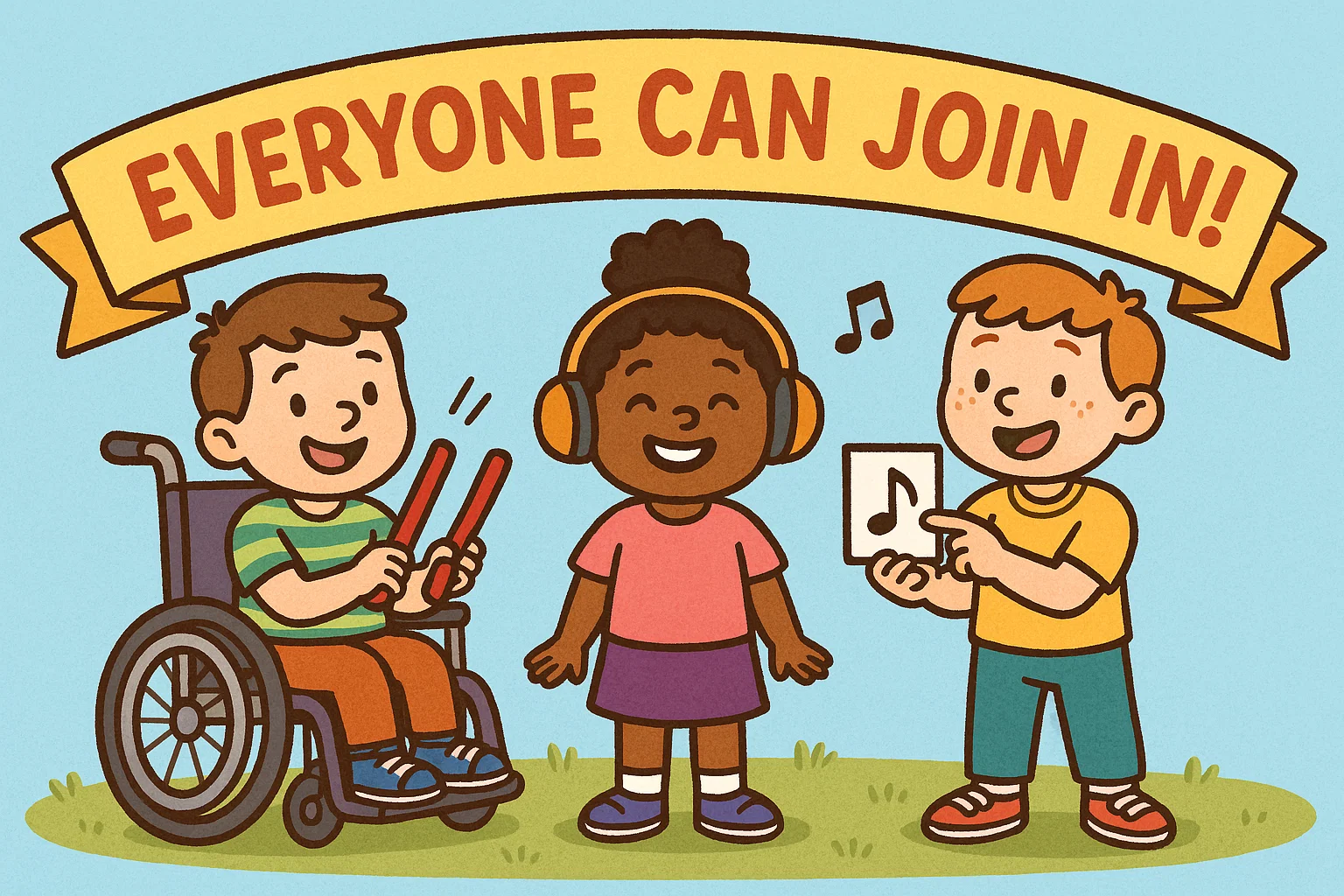
Every child deserves to participate in music. Here are some ways to make sure everyone can join in.
Volume and Tempo Choices
Some children are sensitive to loud sounds. Offer noise-reducing headphones or designate a “quiet corner” where they can listen from a distance. Use visual cues, like a hand signal for loud and soft, to help communicate changes in volume.
Mobility and Motor Variants
For children with mobility challenges, adapt activities so they can participate from a seated position. Use hand signs or props that are easy to hold. Focus on non-competitive games that reward effort over speed.
Language-Light Cues
Use picture cards, color codes, and simple gestures to communicate. For instance, a green card could mean “go” and a red card could mean “stop.” This helps children who are non-verbal or have language delays participate fully.
Safety, Noise, and Behavior Management
Keeping activities safe and positive is key.
Space Setup and Clear Boundaries
Before starting, make sure the space is clear of hazards. Use tape or mats to create clear zones for dancing or instrument play. Have a “walkway rule” to prevent running and collisions.
Volume Rules and Ear Care
Talk to kids about “inside voices” vs. “outdoor voices.” For loud instruments like drums, set a time limit to protect everyone’s ears. A simple hand signal can be used to remind everyone to lower their volume.
Turn-taking and Praise Scripts
Using specific feedback phrases is especially effective. For example, say, “I love how you shared the shaker with your friend” rather than just “good job.” Rotate roles frequently so everyone gets a chance to be the leader.
Materials, Setup, and Budget
You don’t need a lot of money to have fun with music.
Low-Cost Starter Kit
A simple starter kit can include things you already have at home:
- A Bluetooth speaker for playing music
- Homemade shakers and rhythm sticks
- A set of colorful scarves or ribbons
- A timer or a set of cards for beat patterns
DIY vs. Store-bought
Decide when it makes sense to create something yourself vs. buying it. DIY shakers are easy and cheap to make, but a store-bought xylophone or ukulele might be a better investment if you want to explore more complex music.
Printables and Cards
Printable beat cards, tempo arrows, or instrument ID cards can be laminated and used again and again. You can find many free resources online.
Sample Plans and Routines
These sample plans can help you structure a session, whether it’s 10 minutes or 45.
10-Minute Warmups
- Body Wake-ups: Start with a simple “wake-up” song, where you wiggle different body parts to the music.
- Call-and-Echo: Do a quick round of clapping and singing call-and-echo.
- One Listening Focus: Spend one minute listening to a single piece of music and then talk about how it makes you feel.
30-Minute Preschool Session
- Welcome Song: Start with a special song that signals the beginning of music time.
- Movement Block: Spend 10 minutes doing a movement activity, like Freeze Dance or Animal Dance.
- Instrument Turn-taking: Pass out a small number of instruments and have kids take turns playing along to a song.
- Story: Read a book with a musical theme, like a nursery rhyme.
- Goodbye: End with a special song that signals the end of music time.
45-Minute Elementary Session
- Rhythm Grid: Start with a 5-minute rhythm grid activity.
- Ensemble Build: Spend 20 minutes working on a simple ensemble piece, where everyone has a specific role.
- Reflection: Take 5 minutes to talk about what they created and what they enjoyed.
- Performance: End with a short “performance” for the rest of the class or a family audience.
Family and Classroom Participation
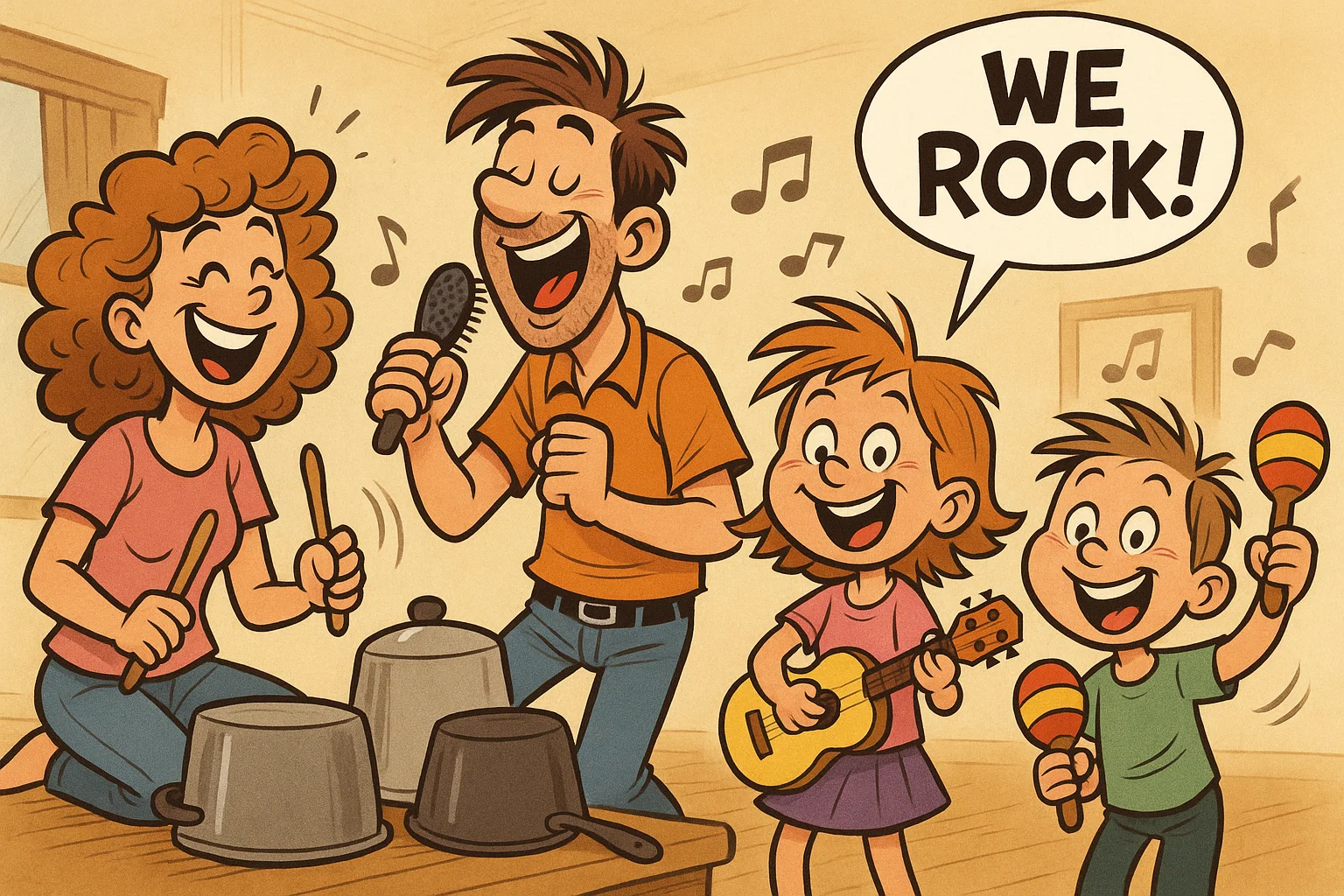
Encouraging adults and peers to participate makes music a shared experience.
Family Band Night
Schedule a weekly “Family Band Night.” Assign different parts to family members, based on their comfort level. Take a photo or video to celebrate your performance and build a sense of shared accomplishment.
Peer Leaders and Helpers
In a classroom setting, create a “conductor” or “leader” badge. Let different kids take turns leading an activity. Afterward, debrief and talk about what it feels like to be a leader.
Home Extensions
Send home a weekly playlist with songs you’ve used in class or a simple DIY shaker kit so families can continue the fun at home.
FAQs
How long should sessions last by age?
- Toddlers: Keep it short and sweet, around 5–10 minutes. Look for signs of disinterest, like turning away or fussing, and be ready to switch activities.
- Preschoolers: A 15–30-minute session is often a good length. This structure is commonly used in preschool music programs.
- Early Elementary: You can sustain attention for 30–45 minutes, especially with varied activities.
How to choose songs?
Choose songs with a clear beat and clean lyrics. It’s great to have a variety of songs from different cultures and with different tempos and moods. The goal is to find fun, educational tunes that kids love.
What if kids feel shy?
Never force a child to participate. Offer “opt-in” roles, like being the silent “music director” or a helper who hands out instruments. Suggest silent participation, where they can just watch and listen, and praise them for being a great audience. A music therapist often uses these techniques to create a safe space for expression.
